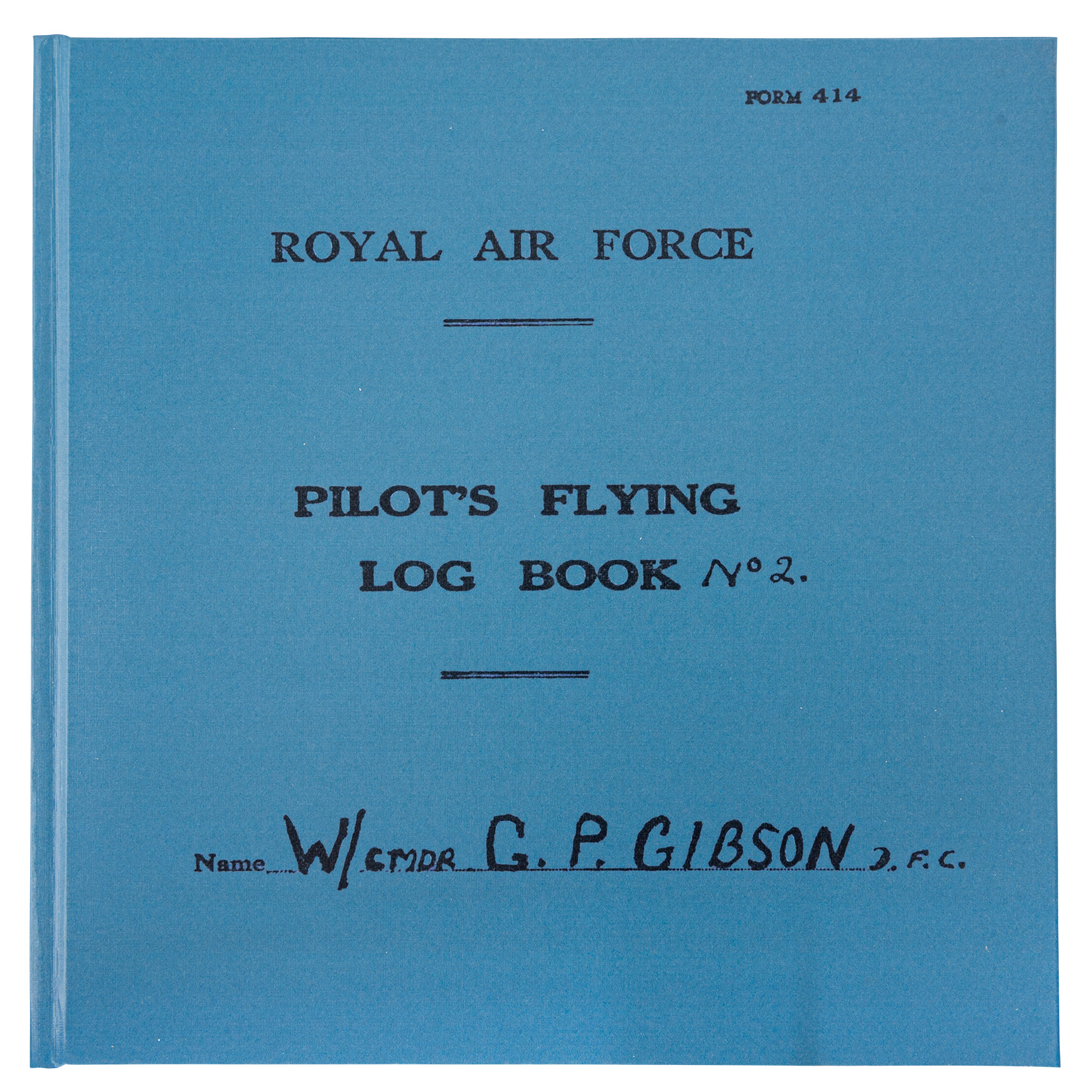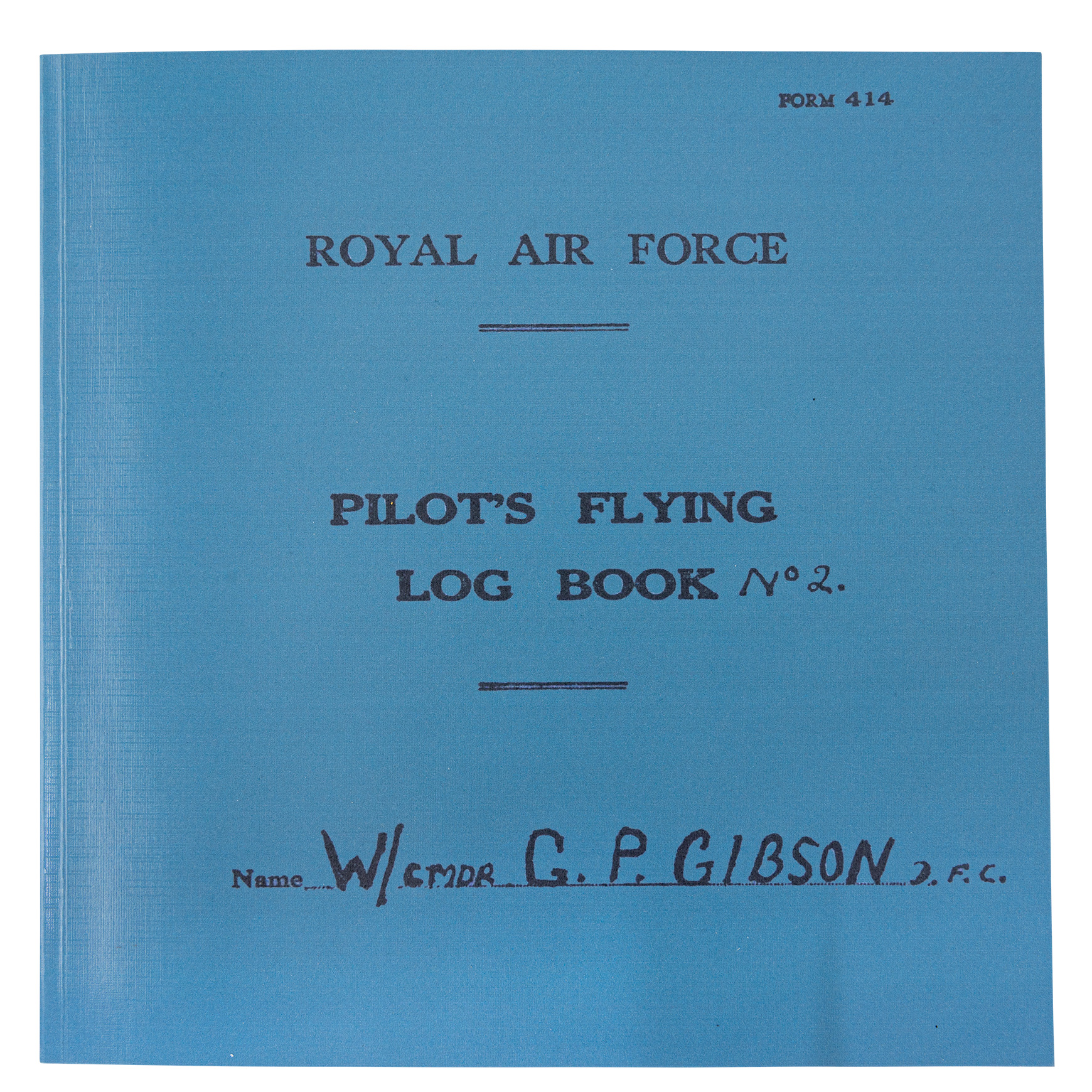The Hardcover: this edition has the same number of pages and information as the original. The cover is in the most accurate colours and of the best quality. The book is professionally bound and will remain a treasure long after you have read it page by page! A collector’s item for WW2 and RAF enthusiasts of all stripes.
Now is your chance to get a copy of Guy Gibson’s Flying Logbook! If you’ve always wondered how many operational missions Gibson flew, or what types of aircraft he piloted, now you can get the answers to those and other questions!
Read all about the humble beginnings, his move to Fighter Command, his return to Bomber Command and his last entry on the 16th of September 1944; three days before his crash at Steenbergen, The Netherlands.
Why get a copy of Guy Gibson’s Flying Logbook? Gibson is without a doubt the most famous Bomber Command Pilot to have served in the RAF. He received well-deserved decorations for his incredible achievements: as the leading man of Operation Chastise, later known as the Dambuster Raid, he succeeded in one of the most daring operations of the second World War at just 24 years old! At that time, he was the most experienced Bomber Command pilot in the force and the best man for the job.
Reading his Flying Logbook, I discovered many details about Gibson’s flying career not easily found in other documentation. And I’m not the only one with this experience! We want as many interested people as possible to have the chance to read what this man’s actions and achievements were in his own words and in his own handwriting. You will be surprised!
About Guy Gibson
Wing Commander Guy Penrose Gibson, VC, DSO & Bar, DFC & Bar (12 August 1918 – 19 September 1944) was a distinguished bomber pilot in the Royal Air Force during the Second World War. He was the first Commanding Officer of No. 617 Squadron, which he led in the “Dambuster” raid in 1943, resulting in the destruction of two large dams in the Ruhr area of Germany. He was awarded the Victoria Cross, the highest award for gallantry in the face of the enemy that can be awarded to British and Commonwealth forces, in the aftermath of the raid in May 1943 and became the most highly decorated British serviceman at that time. He completed over 170 war operations before dying in action at the age of 26.
Gibson’s death was formally announced on 8 January 1945. However, many knew of his loss before this date.
On 19 December 1944 Winston Churchill wrote to Eve Gibson, the wife of Guy:
‘I had great admiration for him – the glorious Dambuster. I had hoped that he would come into Parliament and make his way there after the stress of the war was over, but he never spared himself nor would allow others to spare him. We have lost in this officer one of the most splendid of all our fighting men. His name will not be forgotten; it will for ever be enshrined in the most wonderful records of our country.’
In his introduction to Enemy Coast Ahead, Sir Arthur “Bomber” Harris described Gibson as:
‘As great a warrior as this island ever bred.’
Barnes Wallis, the inventor of the Upkeep or bouncing bomb, said of Gibson:
‘For some men of great courage and adventure, inactivity was a slow death. Would a man like Gibson ever have adjusted back to peacetime life? One can imagine it would have been a somewhat empty existence after all he had been through. Facing death had become his drug. He had seen countless friends and comrades perish in the great crusade. Perhaps something in him even welcomed the inevitability he had always felt that before the war ended he would join them in their Bomber Command Valhalla. He had pushed his luck beyond all limits and he knew it. But that was the kind of man he was…a man of great courage, inspiration and leadership. A man born for war… but born to fall in war.’


